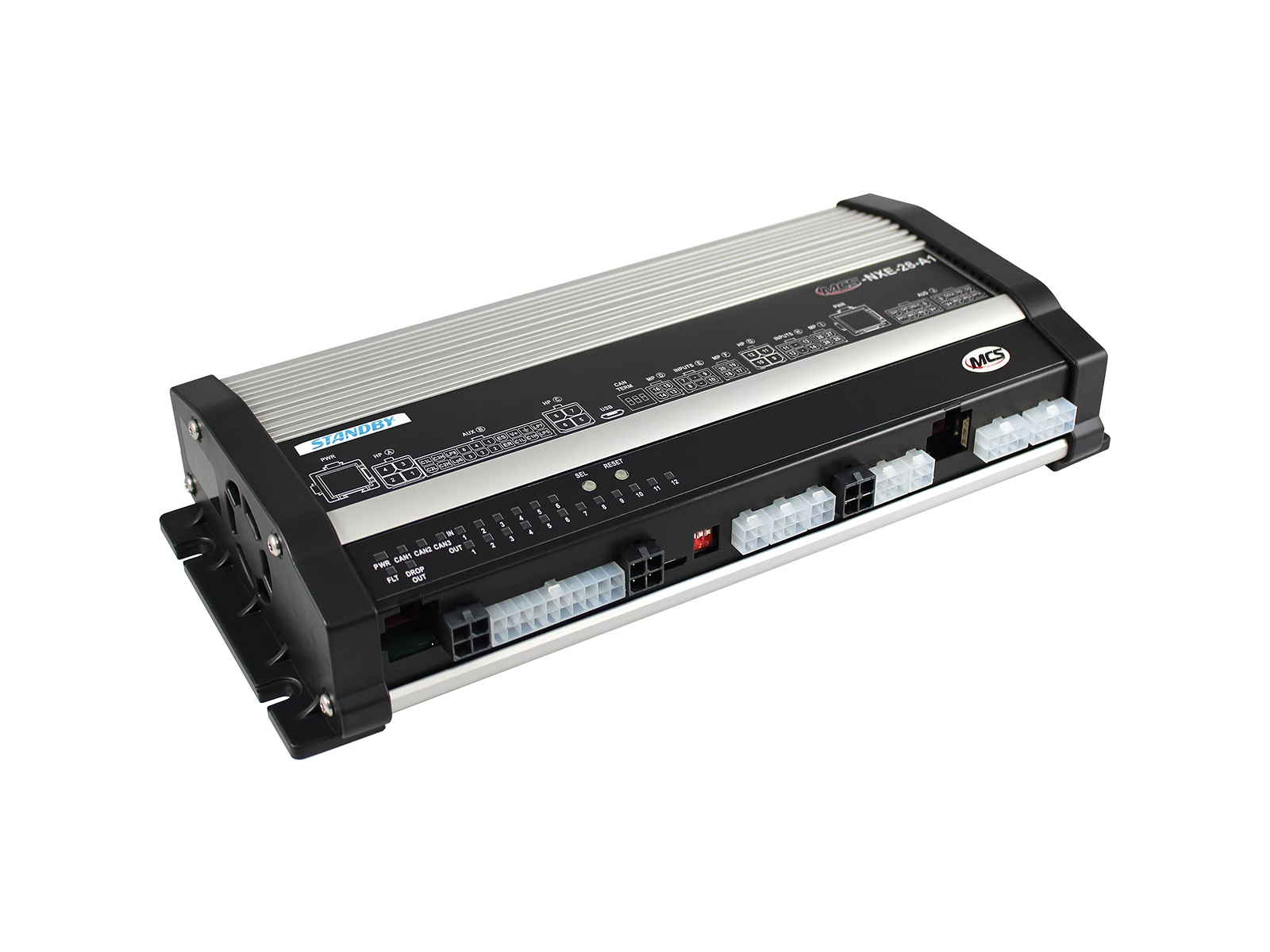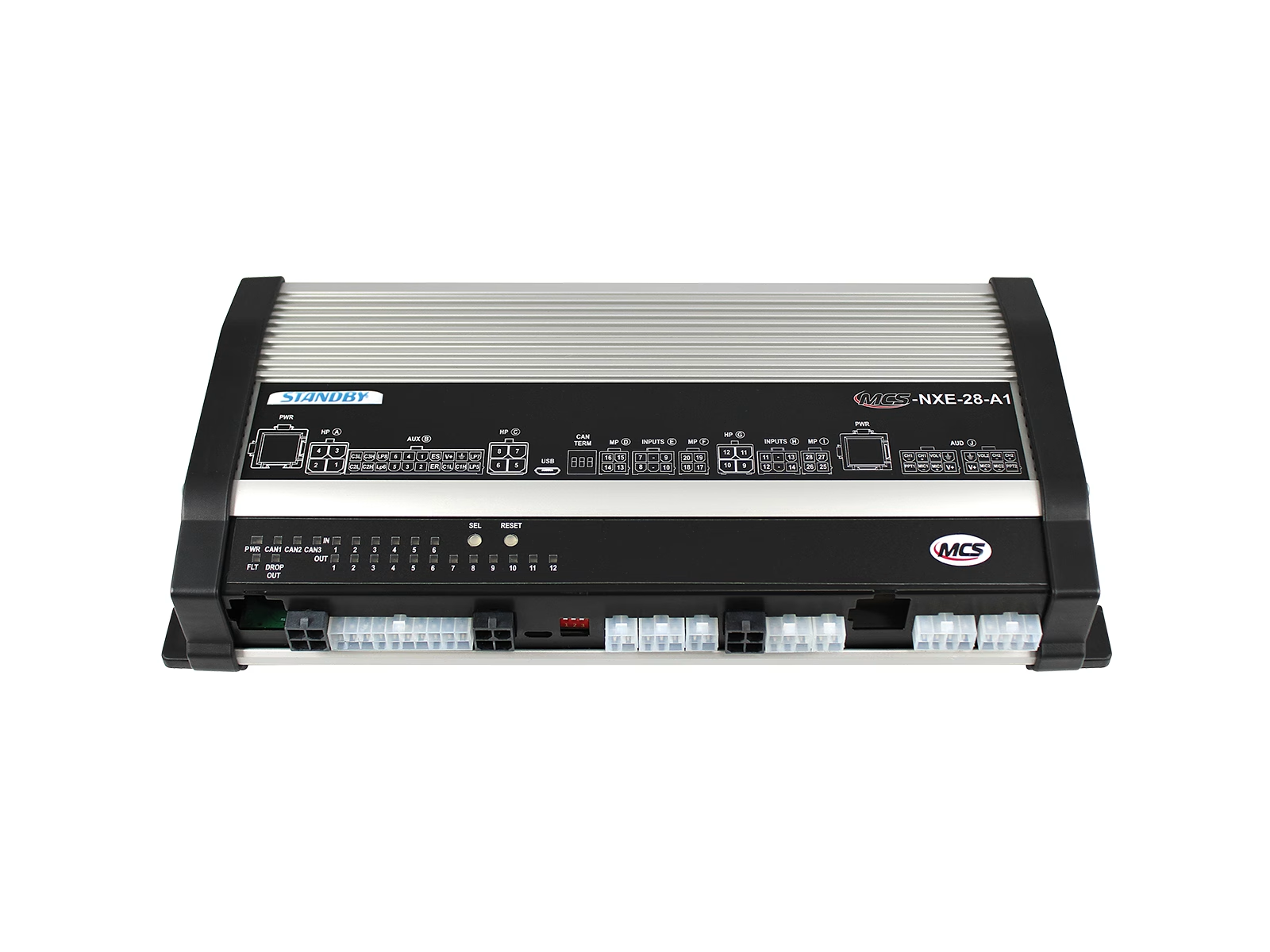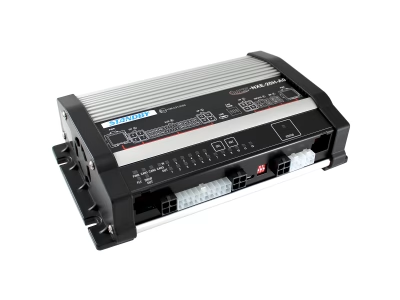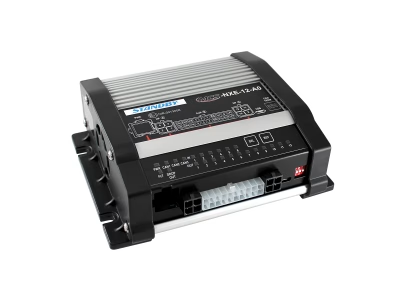MCS-NX vs MCS-NXE
MCS-NX
The Next Generation MCS NX range has been designed for vehicles fitted with a high-level of non-OEM additional electrical features that would typically be installed on Emergency Service vehicles. Features such as Emergency Service siren amplifier are included on most products.
MCS-NXE
The MCS-NXE (Enterprise) range of control systems has been designed primarily for use on Commercial application fleet vehicles equipped with a lower-level of non-OEM additional electrical features installed. This means that unnecessary capabilities such as an Emergency Service Siren Amplifier are excluded on NXE models along with circuits that are not usually required on Commercial vehicle builds. Low power outputs are negative only whereas the MCS-NX can switch positive or negative with its Low power output. The MCS-NXE has the same core hardware, utilises the same MCS-NX-CONFIG software and the same CANlib.
Human Machine Interface
The MCS-NXE-28 Next Generation Control Unit is fully compatible with the existing range of MCS handsets and switch units for the operation of rooftop lighting, secondary lighting, and power management. This model is ideal for higher-level complexity vehicle builds and offers essential features in a space-saving footprint. It is available with or without an audio intercom capability.
Audio Intercom
The Audio Intercom can be added to the MCS-NXE (denoted by -A1). This is an intercom system that allows for two-way communication via two differential microphone inputs and two 5W speaker outputs. To facilitate this there are two PTT switch inputs and a volume control for each channel. This can also be used to play audio announcements.
Software Configuration
Improving the intuitiveness of the configuration software was key to the development of the NX and NXE ranges. Incorporating new features and functions in a logical order has greatly enhanced the user experience making the software easier to navigate and understand and includes the following features:
- An intuitive user interface that allows users to interact with the logical flow and modules easily.
- A library of pre-built basic functions and specialised modules that users can drag and drop.
- Drag-and-drop functionality to enable users to place modules in the desired order within the logical flow.
- The settings panel provides a clear and concise interface for configuring module settings.
- Users can define the execution order of modules to ensure the desired logical flow.
- Allows users to define custom modules by specifying inputs, outputs, and the underlying code or functionality.
- Modules have clear labels and icons for easy identification and differentiation.

 Global Market
Global Market Sverige
Sverige Deutschland
Deutschland France
France Suomi
Suomi United Kingdom
United Kingdom




